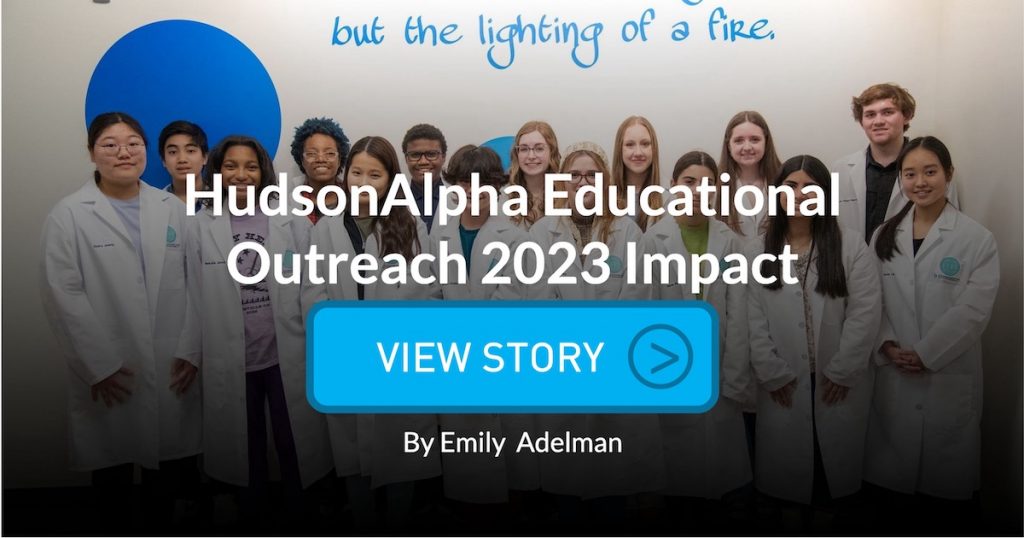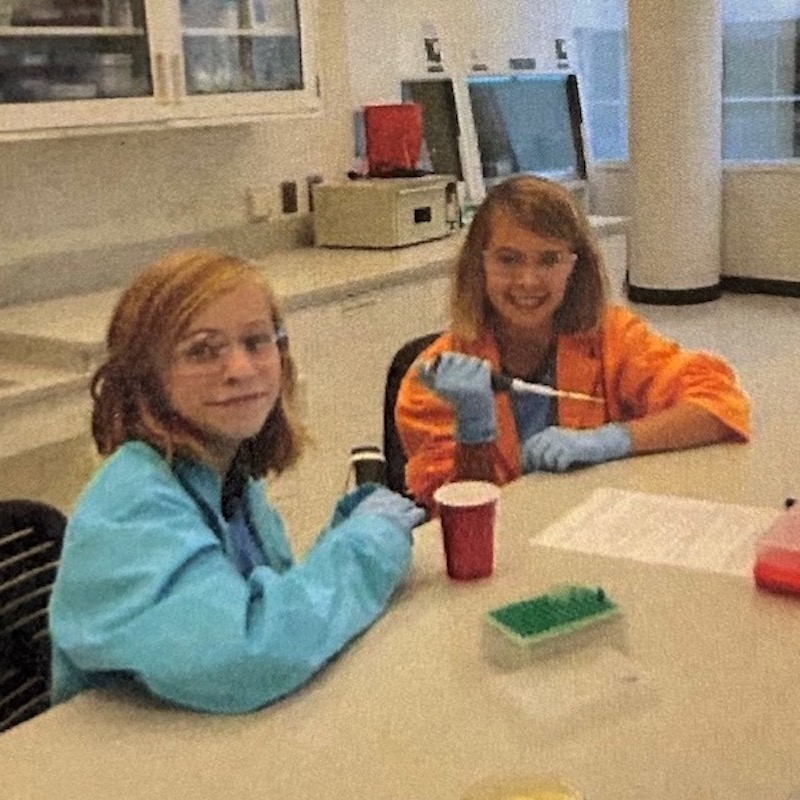The HudsonAlpha Institute for Biotechnology partnered this school year with James Clemens High School on a project to study the microbiome, or biological environment, of the school.
Throughout the school year, students used sterilized swabs to collect samples of microorganisms around campus — on bleachers, in the cafeteria, in locker rooms, and dozens of other places throughout the school.
The samples were brought back to labs at HudsonAlpha for processing and analysis.
Co-led by HudsonAlpha faculty investigator Shawn Levy, Ph.D., and HudsonAlpha Vice President for Education Neil Lamb, Ph.D., the project is an extension of the recently published New York City PathoMap project, which sampled the microbiome of the New York subway system. Levy is a collaborator on the PathoMap project.
“My research laboratory has had a long-standing interest in metagenomics and environmental genomics,” said Levy, founder and director of the Genomic Services Lab at HudsonAlpha. “I approached Neil (Lamb) to say this would be a great project to do with one of the schools.”
Lamb agreed and partnered with educators at James Clemens on the creation of the program, which is a long-term project to be carried out over multiple school years and across curriculums, involving not only science classrooms but students in English, statistics, history and art.
“It was born out of an idea of taking some brand new science that is happening all over the world and that is happening here at HudsonAlpha in studying the microbiome and looking at ways to bridge it into an educational setting,” said Lamb. “It is one of the first examples of taking cutting-edge science and putting it into students hands to help them solve real-world science problems.”
Lamb explained that bacteria has gotten a bad reputation when in reality, humans live in close contact with all different kinds of bacteria, some of which are actually good for us.
“This data is something that has never been examined before,” said Lamb. “No one has ever looked at the types of bacteria that are present in a school, so this really gives insight into something that a lot of people of wondering but have never actually looked at.”
The project is ongoing, and results of the study will be published at a later date.


